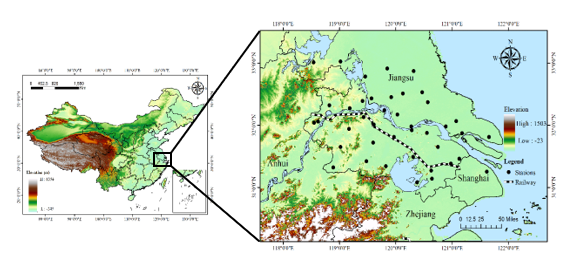
High-speed railway (HSR) is severely affected by precipitation disasters. There are many studies on precipitation and precipitation disasters, most of which are precipitation and analysis of disasters caused by precipitation, and few explain climate changes caused by precipitation. This paper uses surface meteorological observation data within 90 km along the Jiangsu section of the Beijing-Shanghai HSR to study the characteristics of precipitation along the line in 2016 ~ 2018 and the characteristics of climate change before the occurrence of precipitation events. This paper presents that when air pressure along the HSR with a relatively low level and a higher probability of precipitation. The low temperatures in April, June and July are more likely to produce precipitation. Correlations analysis shows that the three types of precipitation events are different. The time scale of the correlation between temperature and pressure changes before the occurrence of mild to moderate precipitation events is farther, and the temperature and short-term pressure changes 6 hours before the occurrence of heavy precipitation events. In contrast, the air pressure and temperature within 2 hours before the occurrence of extreme precipitation change rapidly and have a strong correlation, which indicates the occurrence of extreme events.
Total file downloads: 5